MusicRadar Verdict
Although there is certainly no shortage of competition in this highly competitive sector of the market, the Meridian maple kit is well appointed, performs impressively and deserves your consideration.
Pros
- +
Provides a simplified set of options in Mapex's mid-range. An impressive all-rounder.
Cons
- -
It's up against some stiff competition
MusicRadar's got your back
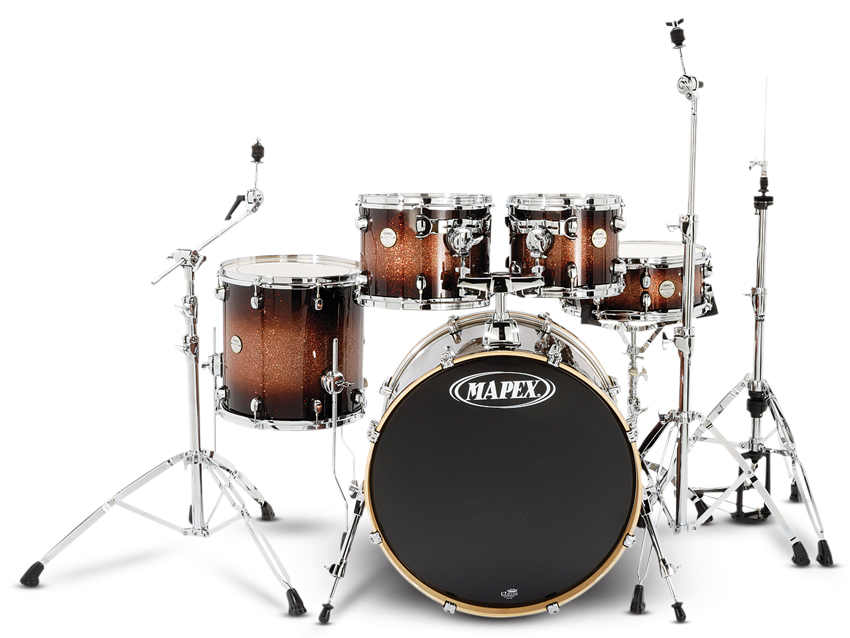
Mapex Meridian Maple Kit
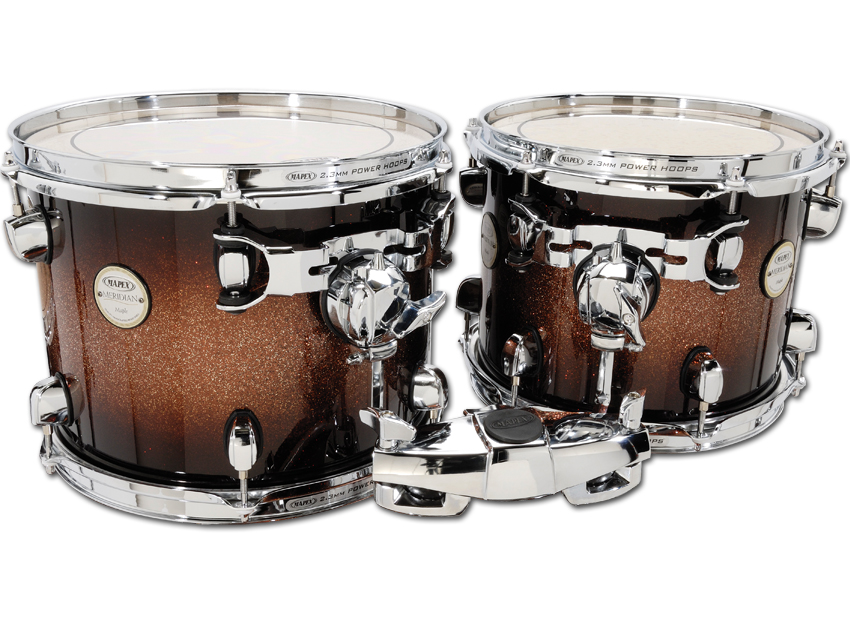
Mapex Meridian Maple Kit
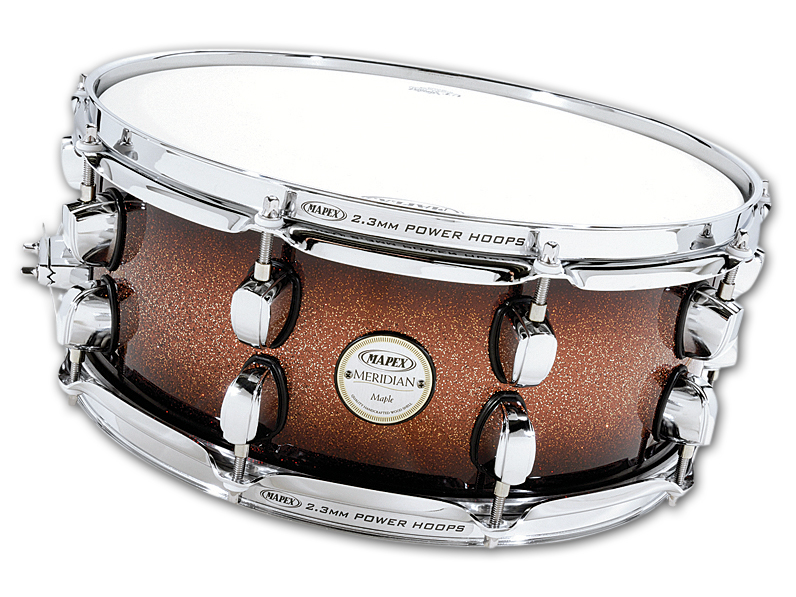
Mapex Meridian Maple Kit
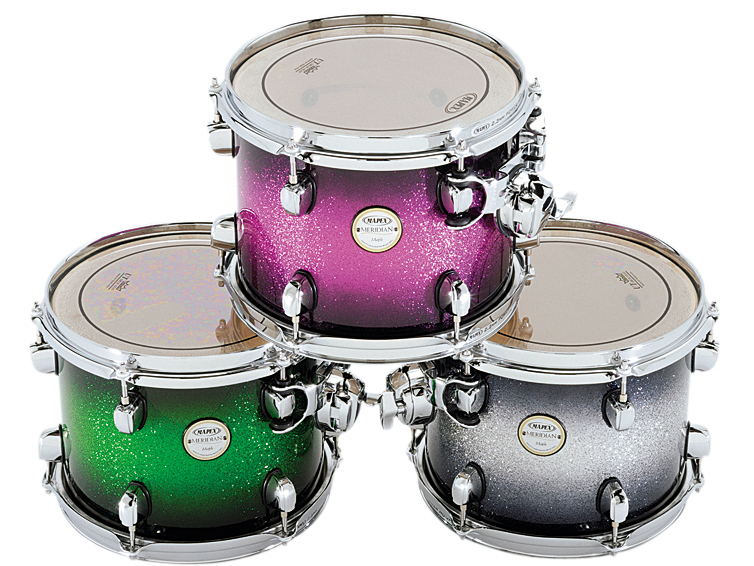
Mapex Meridian Maple Kit
Launched at the 2009 NAMM show, the Meridian series replaces two previous Mapex ranges, Pro M and M Birch. As such, the Meridian series is split into a selection of all-maple and all-birch kits.
Mapex is keen to stress the new range of kits is more than a re-badging exercise, with plenty of new features and designs incorporated into the drums.
"The kick delivered impressive slabs of bottom end rumble, while the snare cut brightly through figures with ease"
Though both types of Meridian kits are positioned in the mid-range sector, a sizeable price difference separates the two wood options (birch being cheaper to procure than maple). A recent winner of the MIPA award for Best Acoustic Drum Kit, the first Meridian kit to reach us was of the more expensive maple variety.
Build
The supplied Meridian maple kit is one of four options currently available and, along with three of the four choices, is a five-piece set up. It is comprised of a 22"x18" bass drum, 14"x5 1/2" snare, 10"x8" and 12"x9" rack toms and a 14"x14" floor tom. All mounting hardware is included along with a 700 series hardware pack, which features a snare stand, hi-hat stand, a boom cymbal stand and also includes a bass drum pedal.
There are immediate visual differences to the drums that distinguish them from the old Pro M series. Easiest to spot are the new lugs which have been designed to have a smaller footprint on the shell.
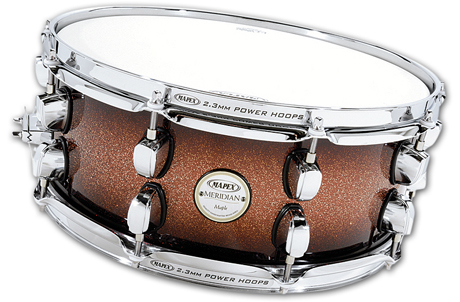
The familiar Mapex oval-shaped design has been remodelled to something more along the lines of a curved, bullet-style lug. Each lug is attached to the shell by a single screw and metal-on-wood contact is prevented by the provision of moulded rubber grommets. These new lugs feature exclusively on the Meridian Series.
The shells themselves are, in the main, unchanged from those found on the previous Pro M series, with one critical difference: an additional back cut has been applied to the bearing edges in order to create more contact surface between the head and shell. The angle of the bearing edges remains the same at 4 degrees; the effect of the back cut is to move the bearing edge fractionally inwards towards a flatter area of head.
Want all the hottest music and gear news, reviews, deals, features and more, direct to your inbox? Sign up here.
The shells are all 100 percent maple and share a seven-ply construction, with toms and snare drums coming in at 5.8mm thick, while bass drums are a fatter 7.2mm.
A total of six high-gloss lacquer Meridian finishes are offered in the UK, with most of them being sparkles. The Root Beer Burst that the review kit wears glitters away in the shadows and virtually erupts when put under lights. If the half dozen options aren't tempting enough, further finishes are available through special order.
Another feature making its debut on Meridian kits is a redesigned tom mount. Mapex's Isolated Tom Mount System (ITS) attaches directly to a pair of lugs on the drum it suspends. At the bottom end of each lug the ITS bracket is locked into place with what looks like an extra tension rod, but is actually tightened with an Allen key.
The bracket at the top end of the lug is hooked over the tension rod collar, but is held firm on account of the lower bracket assembly. With everything in place, no movement is allowed (unlike, for example, RIMS-style mounts) when the drum is hit. Correspondingly, everything is held so tightly that changing a head can be done with the drum mounted, without having to worry about it sliding off the stand or components being lost.
Mapex reckons that the ITS is a less intrusive method of mounting toms, claiming that as it attaches to the lugs it can only maximise shell resonance. It's certainly a sleek-looking piece of hardware that, unlike some alternatives, doesn't add a great deal of bulk or weight to the drum.
While the toms might have new mounts to hang from, the floor toms are far from overlooked as they are now equipped with innovative spring-loaded legs. These work exactly as you would expect a spring is located between the end of the leg and the rubber foot, allowing almost a centimetre of vertical cushioning movement.
In theory, it makes perfect sense, as the action of the springs can only help isolate the floor tom, allowing it more to vibrate.
Hands On
Remo UT heads are fitted throughout the kit with, unusually, twin-ply Pinstripe versions on the toms. The influence of the heads was immediately apparent as the toms gave fat, juicy notes from the off. Pinstripes tend to subdue attack in favour of a thicker sound and this rang true with the toms as they produced deep, warm tones.
The sense of depth that thicker heads encourage makes high tunings sound lower than they are and the toms sounded larger than their dimensions all the way up to near maximum tension. Changing the Pinstripes for regular coated Ambassadors gave the toms more of an attacking edge and allowed for a slower, more resonant decay.
With both types of heads they performed well, but the supplied Pinstripes matched best.
Like the toms, the bass drum seemed keen to deliver a big sound. Though only sporting a single-ply batter head (with a built-in muffling ring) the kick delivered impressive slabs of bottom end.
At mid-tunings it didn't possess a huge amount of attack ahead of its deep rumble. Slackening off the heads considerably brought more of a slap that gave it a real punch. Wide open, it had a naturally dry air with a pleasing decay, while applying a small amount of dampening focussed its sound. Bringing the tuning up encouraged the drum to project further, but some of its low-end was diluted in the process.
The snare drum also put in a strong performance, cutting brightly through figures with ease. At mid to lower tunings its crisp attack was augmented by a fat note. At higher tunings some of its inherent grunt was obscured by its bite, but the drum's authority remained unaffected.